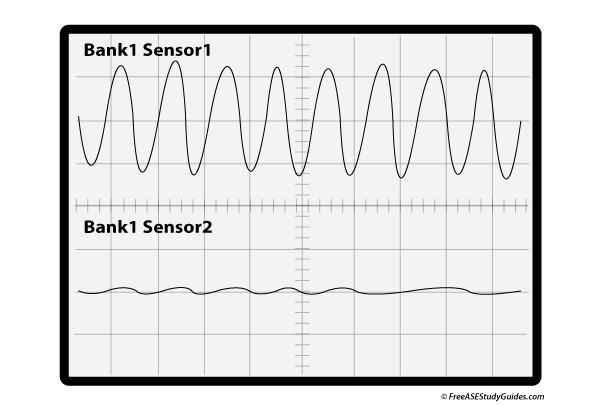ASE A8 Engine Performance Practice Test
36. Which of the following creates and sends an AC voltage signal to the ECM when it detects detonation?
- A. The throttle position sensor.
- B. The knock sensor.
- C. The manifold absolute pressure sensor.
- D. The oxygen sensor.

37. Bank 1 Sensor 1 is the pre-catalytic converter heated oxygen sensor, and Bank 1 Sensor 2 is the post-catalytic converter heated oxygen sensor. Technician A says to replace the Bank 1 Sensor 2 because the two waveforms should have similar voltage peaks and fluctuations. Technician B says Bank 1 Sensor 2 monitors the catalytic converter's ability to reduce pollutants in the exhaust stream. Who is correct?
- A. Technician A
- B. Technician B
- C. Both A and B
- D. Neither A or B
38. An engine with variable valve timing has a rough idle but runs smoothly at higher speeds. Technician A says to check the variable valve timing solenoid and its associated circuit. Technician B says this problem can be caused by unchanged contaminated oil. Who is correct?
- A. Technician A
- B. Technician B
- C. Both A and B
- D. Neither A or B
39. Technician A says an (AF) air-fuel ratio sensor senses a wider range of air-fuel mixtures than a standard oxygen sensor. Technician B says stoichiometry is 15.7:1 air to fuel mixture. Who is correct?
- A. Technician A
- B. Technician B
- C. Both A and B
- D. Neither A or B
40. A vacuum gauge is installed on a port on the intake manifold and the needle fluctuates between 2-4 "Hg. Which of the following would result in this condition?
- A. A faulty ignition coil.
- B. A bent intake valve.
- C. A sticking exhaust valve.
- D. All of the above.